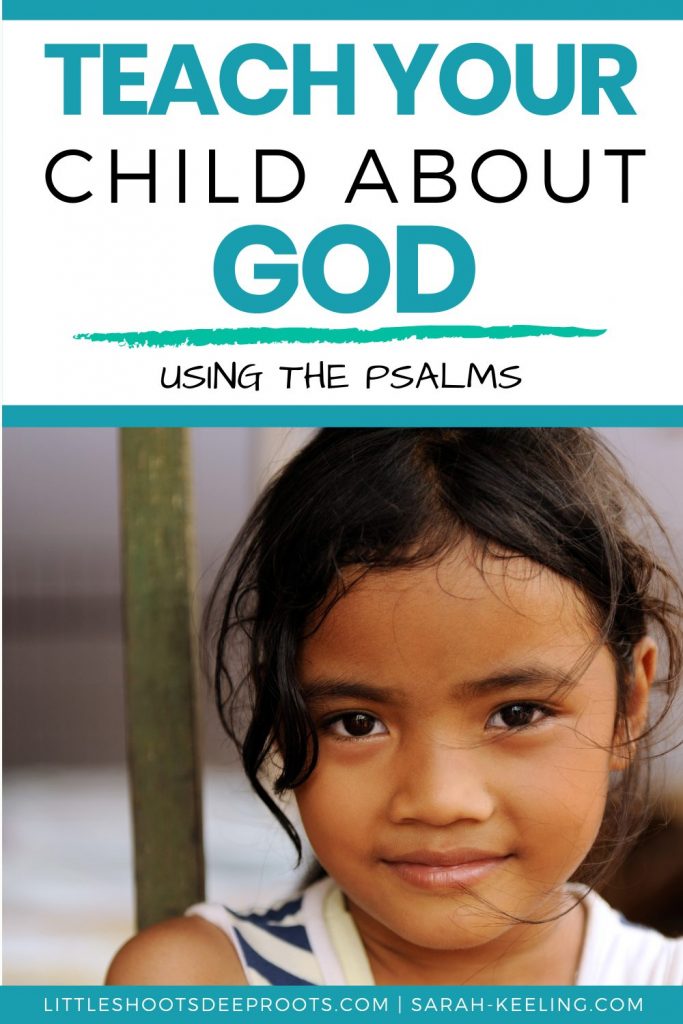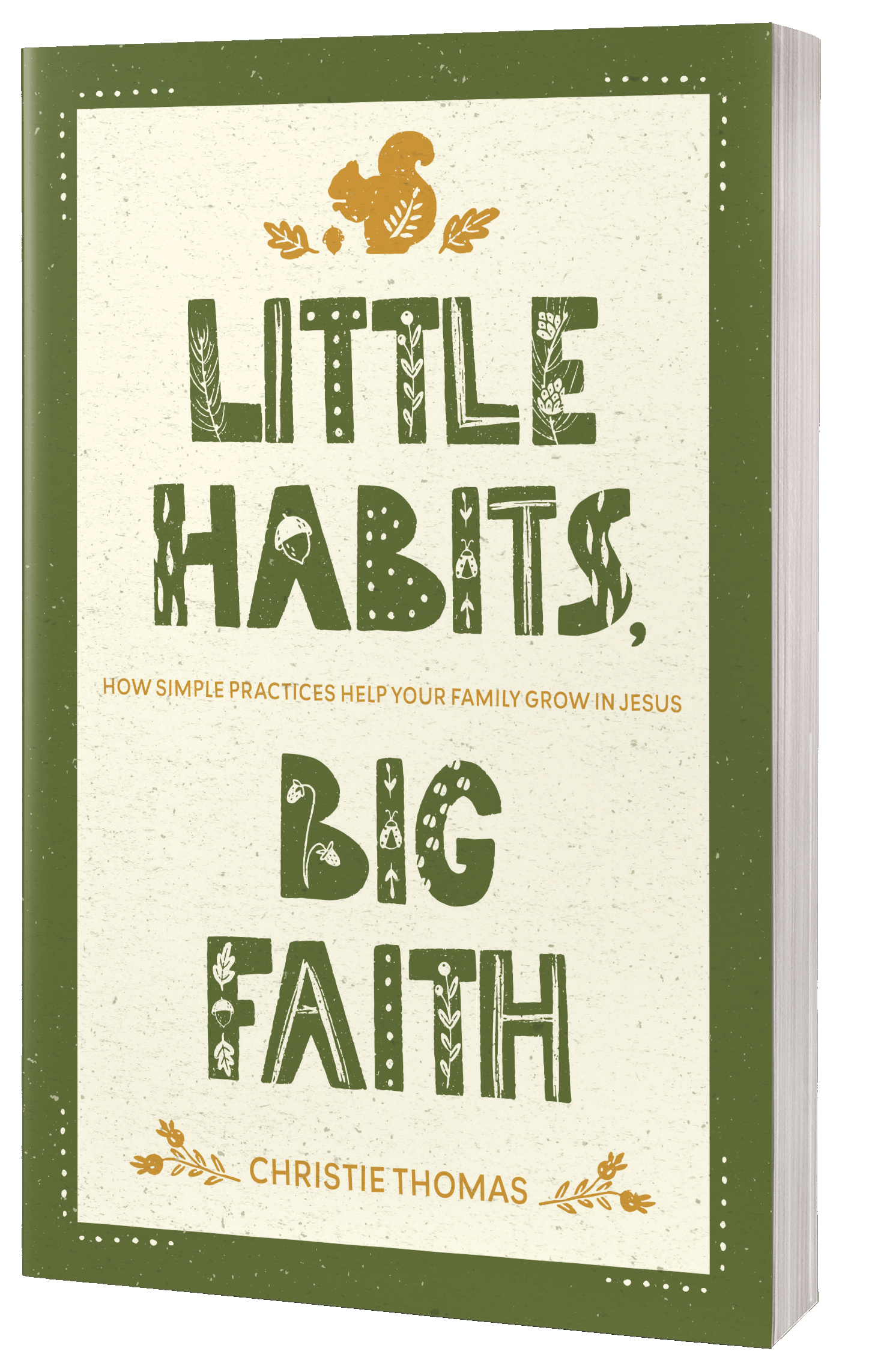Learn HOW to pray Psalms with kids and WHAT we can actually teach our kids about God through the Psalms, by author Sarah Keeling.
Wouldn’t it be amazing if your kids could use the Bible to learn who God is, and then offer Him prayers based on His attributes?
This may seem like an impossible, huge task, but I promise, it’s really not! I taught our son to do this when he was seven years old, and I was amazed at how easy it was for him. You can do it too!
Here’s a super-simple, step-by-step guide to help you teach your kids to pray the attributes of God found in the Psalms.

Why should I learn how to pray Psalms with my kids?
You might be wondering what makes praying the Psalms special. Of course, it’s great to pray all Scripture, but the Psalms are unique because they are the songbook of Israel. Donald S. Whitney says, “God gave the Psalms to us so that we would give the Psalms back to God.”*
Example:
Lord God, you are my hope.
Psalm 71:5 (ICB)
I have trusted you since I was young.
Here are some fabulous ways that we can give the Psalms back to God. (**We don’t have to use all the ways. Choose one, then build on it!)
Using Psalms to Teach Kids About God
An attribute of God tells us about God, and the Psalms are perfect for helping us find and understand his attributes. As they learn his attributes, they learn more about their amazing God.
To find an attribute, ask your child, “What do these verses tell us about God?” Or, “Who do these verses say God is?”
Example:
- God is my hope.
- God is trustworthy.
Follow this up with these activities to learn how to pray Psalms:
- Give a simple definition of each attribute of God.
This doesn’t need to be fancy or elaborate. You can use the internet to help you.
Example:
“God is our hope” means we can wait expectantly for God to do what He says He will do. Just like Rahab put the red cord out her window, waiting to be rescued when Jericho was destroyed, we can wait and trust God to help us too.
(I used Blue Letter Bible for this definition. It’s super easy to navigate their website and app.)
2. Offer the attributes of God in praise.
This seems super obvious, but the most simple things are often the most powerful.
Example:
- God, You are my hope.
- God, You are trustworthy.
3. Ask children to share how they have seen each attribute of God at work in their lives.
They may not do this at first, and that’s OK. The more you pray, giving thanks for who God is, the easier it will be for them to do the same.
They may need some directed questions to help them see how they have experienced God.
Examples:
- What are you waiting for God to do in your life?
- Is there anything you need help with?
- How has God helped you wait for Him?
- How has God been trustworthy this week?
4. Show them how to turn that gratitude into a prayer of thanks.
Start with thanking God for who He is, and then add how you have experienced that attribute of God in your life.
Example:
- God, thank You that You are my hope, and I can wait expectantly for You.
- Thank You for helping me trust You when my family was sick.
5. Offer them an opportunity to pray their thanks too.
It’s totally OK if your kids aren’t able to do this exactly like the example. They will have their own versions. After we first taught our son this prayer method, he usually thanked God for his chickens. Little by little, though, he began to add in the attributes of God too. Now, it’s easier for him to make the connections between the attributes of God and his own life.

6. Ask requests using the attributes of God
Read the verses again, use the verses to pray for yourself, and then pray for others.
You can also use the previous questions to help your kids identify what specifically they want to ask God.
Example:
- God, please help me have hope in You.
- God, please help me wait for You to help me be more patient.
- God, please help my brother trust You when he’s scared at night.
If your kids write things unrelated to the verses, that’s OK! Remember, this is practice, and the Holy Spirit is at work.
6. Confess sins using the verses.
First, pray these verses together:
“Search me, God, and know my heart; test me and know my anxious thoughts. See if there is any offensive way in me, and lead me in the way everlasting.”
—Psalm 139:23-24 (NIV)
Ask God to reveal their sin to them, and offer an example of your own sin. Gulp! I know this is humbling, but modeling repentance is the best way to teach it to our kids.
Questions to think about:
- What do you need to confess?
- Does anything in the Bible verses show you something you need to confess?
Examples:
- God, please forgive me for not trusting You when I’m scared.
- God, please forgive me for not having hope in You.
It’s totally OK if your kids are convicted about other things too!
Praying the Psalms can potentially be the sweetest time with your kids, but it most likely won’t start out that way. Expect resistance, and meet it with loving firmness. I used my counselor-voice with our son, who tried really hard to get out of learning to pray the Psalms. It was a lesson for me in patience and perseverance, but the reward was a hundred times worth all the drama. He enjoys it now too, although he might not admit that to anyone.
I’m here cheering you on! With God’s help, you can do it!
Looking for a more in-depth resource to help teach your kids to pray the Psalms? Check out my book, Psalm Prayers for Kids. It has detailed instructions to help your kids learn to connect deeply with God, plus a journal for them to write in, draw in, and make it their own.





0 Comments
Trackbacks/Pingbacks